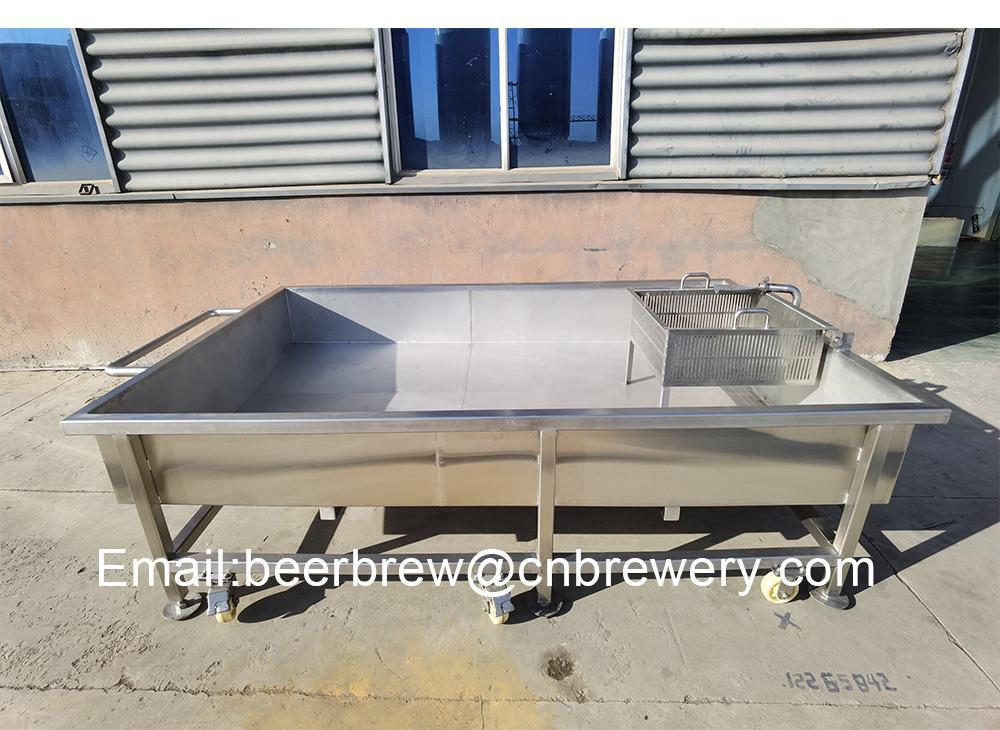
Determine the size: The size of your coolship will depend on the desired batch size of your lambic beer. A typical coolship for homebrewers ranges from 2 to 10 square feet in surface area.
Select the material: Stainless steel or food-grade plastic are commonly used materials for coolships. Make sure the material is non-reactive and easy to clean to avoid any unwanted flavors or contamination.
Shape and depth: The coolship should have a shallow depth, typically between 4 and 8 inches, to maximize the surface area exposed to the air. The shape can be rectangular, square, or round, depending on your preference and available space.
Surface area: Calculate the surface area of the coolship based on your desired batch size. The larger the surface area, the more exposure to the ambient environment, increasing the chances of capturing diverse wild yeast and bacteria.
Cooling capacity: The coolship needs to be able to cool the wort quickly to initiate spontaneous fermentation. Consider adding a cooling element, such as a coil or heat exchanger, to accelerate the cooling process. This can be connected to a glycol chiller or cold water source.
Airflow and protection: Ensure that the coolship allows for sufficient airflow while protecting it from debris, insects, and other contaminants. You can use a mesh screen or cover the coolship with a fine cloth to provide protection.
Location: Choose an appropriate location for the coolship. It should be placed in an area with good air circulation, away from sources of potential contamination like breweries or heavily trafficked areas. Outdoor locations, such as a rooftop or backyard, are often preferred for capturing unique local microflora.
Sanitation: Before each use, thoroughly clean and sanitize the coolship to minimize the risk of spoilage organisms. This step is crucial for maintaining the desired flavors and characteristics of lambic beer.
Remember, brewing lambic beer using a coolship involves spontaneous fermentation, which means the fermentation process is driven by wild yeast and bacteria rather than a specific strain of brewer's yeast. As a result, the final flavors and characteristics of the beer can be unpredictable but can also lead to unique and complex flavors.
It's worth noting that brewing lambic-style beer using a coolship can be a complex and time-consuming process. It requires careful attention to sanitation, patience, and a willingness to experiment and embrace the variability of wild fermentation.
Tiantai brewtech can produce coolship for your brewery.
Thank you very much for your reading.
Helen lee
Sales manager
[email protected]




.jpg)

Get In Touch